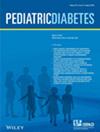Implementation of After-Hours Nurse Line in an Academic Pediatric Endocrinology Practice
IF 5.6
3区 医学
Q2 ENDOCRINOLOGY & METABOLISM
引用次数: 0
Abstract
Background. After-hours triage of pediatric patients by trained nurses improves consistency of triage decisions, access, and quality of care, and decreases burden on physicians on-call. There is a lack of published experience with this approach in the pediatric diabetes population. Methods. An after-hours call service was established in September 2019 in our large urban pediatric teaching hospital. Barton Schmitt guidelines, which are widely accepted as the standard for telephone triage care, were modified to include institution specific diabetes management protocols. We analyzed demographics, reasons for call, clinical presentation to the emergency room, and clinical disposition of the callers. Results. The after-hours call service handled 70% of calls without physician involvement. There were no patients triaged to home care who subsequently required an emergency room visit or hospitalization. Patients who called the after-hours nurse line prior to coming to the emergency room were less sick and were discharged more often from the emergency room. Spanish-speaking parents utilized the service less than English speakers. There were no disparities in utilization based on the insurance status or race. Conclusions. The after-hours service accurately triaged calls and reduced physician burden. Patients of all races and insurance statuses utilized the after-hours service equally well. Language was a barrier in the utilization.在儿科内分泌学学术实践中实施下班后护士专线
背景。由训练有素的护士对儿科患者进行非工作时间分诊,提高了分诊决定的一致性、可及性和护理质量,并减轻了随叫随到的医生的负担。这种方法在儿童糖尿病人群中缺乏已发表的经验。方法。2019年9月在我们的大型城市儿科教学医院建立了非工作时间电话服务。Barton Schmitt指南,被广泛接受为电话分诊护理的标准,被修改为包括机构特定的糖尿病管理协议。我们分析了人口统计学、呼叫原因、到急诊室的临床表现和呼叫者的临床处置。结果。下班后的电话服务在没有医生参与的情况下处理了70%的电话。没有病人被分流到家庭护理,随后需要急诊室或住院治疗。在来急诊室之前拨打下班后护士热线的患者病情较轻,出院的次数也更多。说西班牙语的父母比说英语的父母更少使用这项服务。没有基于保险状况或种族的使用差异。结论。下班后的服务准确地分类了电话,减轻了医生的负担。所有种族和保险状况的患者都同样很好地利用了下班后的服务。语言是使用的障碍。
本文章由计算机程序翻译,如有差异,请以英文原文为准。
求助全文
约1分钟内获得全文
求助全文
来源期刊

Pediatric Diabetes
医学-内分泌学与代谢
CiteScore
6.60
自引率
14.70%
发文量
141
审稿时长
4-8 weeks
期刊介绍:
Pediatric Diabetes is a bi-monthly journal devoted to disseminating new knowledge relating to the epidemiology, etiology, pathogenesis, management, complications and prevention of diabetes in childhood and adolescence. The aim of the journal is to become the leading vehicle for international dissemination of research and practice relating to diabetes in youth. Papers are considered for publication based on the rigor of scientific approach, novelty, and importance for understanding mechanisms involved in the epidemiology and etiology of this disease, especially its molecular, biochemical and physiological aspects. Work relating to the clinical presentation, course, management and outcome of diabetes, including its physical and emotional sequelae, is considered. In vitro studies using animal or human tissues, whole animal and clinical studies in humans are also considered. The journal reviews full-length papers, preliminary communications with important new information, clinical reports, and reviews of major topics. Invited editorials, commentaries, and perspectives are a regular feature. The editors, based in the USA, Europe, and Australasia, maintain regular communications to assure rapid turnaround time of submitted manuscripts.
 求助内容:
求助内容: 应助结果提醒方式:
应助结果提醒方式:


